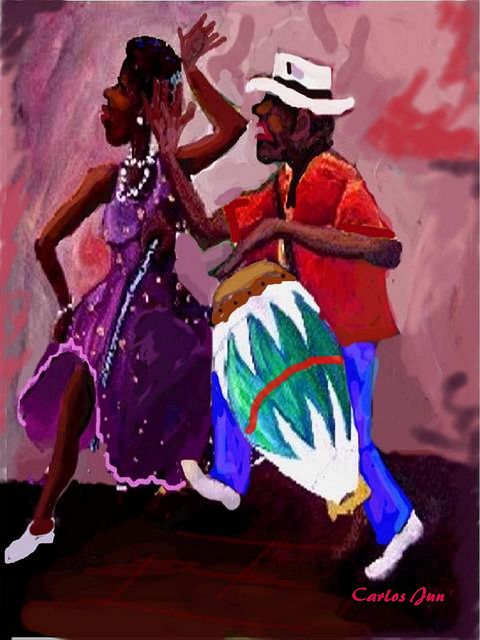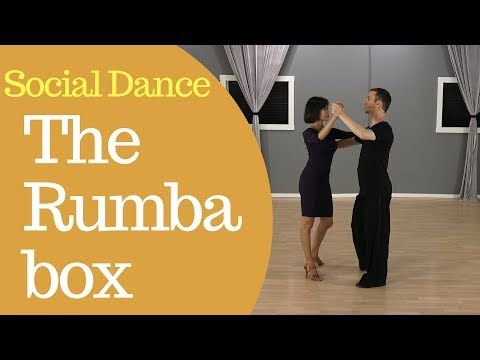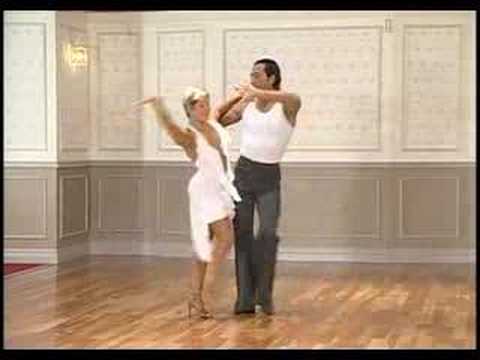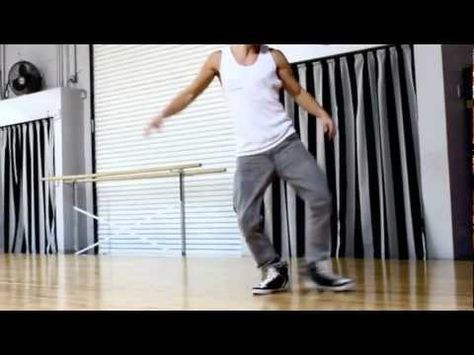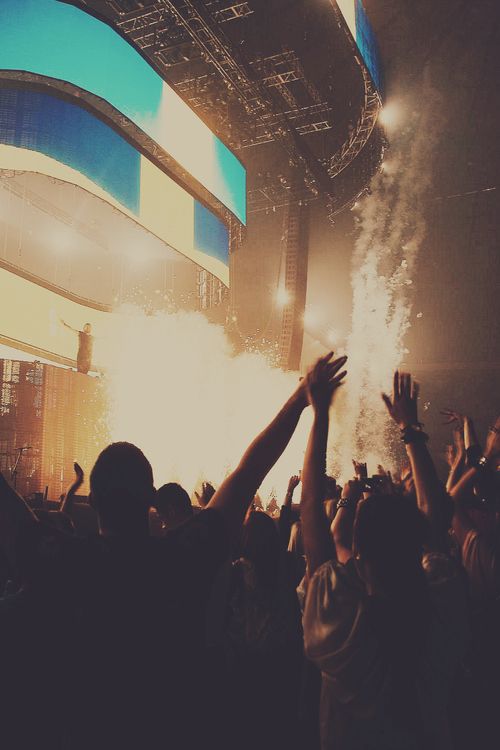How to dance puerto rican salsa
Puerto Rican Dances You Need to Know
Salsa dancers | © jrsnchzhrs/flickr
Kris Pethick
13 January 2018
Watching a Puerto Rican couple on the dance floor is a glorious display as their bodies glide as one to the hot beat of salsa, but while salsa was originated by Puerto Ricans in New York and is the most popular dance, there are others that are just as dazzling.
It is not clear who coined the term “salsa” for this style of dancing, but perhaps it is because it is a blend of many of the dances of Puerto Rico: plena, bomba, cha-cha and mambo, a saucy mixture of a Caribbean sound with a Cuban beat. The dance itself was developed in the mid-’70s by Puerto Ricans in New York. It is believed that the popularity of disco at the time also influenced this dance, as you see glimpses of the Latin Hustle. Salsa is a combination of fast footwork and swaying hips, while the upper body maintains its position. The turns the couple make is what differentiates salsa from mambo.
Merengue is the national dance of the Dominican Republic where it was developed in the late 1700s and came to prominence in the 1800s. It is considered the simplest of the Latin dances to learn as it has relatively easy side-to-side movement, with the man stepping to his left in the “chase step,” and then “dragging” the right leg to meet the left leg. There are differing stories as to how this leg drag came about. One story is that a man with a wooden leg, perhaps a pirate, would dance on the beach to the merengue music, thus dragging his wooden right leg. Another description of the dance step is that it came from the slaves who were chained together by the ankle, thereby creating the necessity of having to drag the right foot. While it may not be as complicated as salsa, the fast beat and staccato horns keep dancers moving.
Danza is a more rigid dance revealing a European influence that has very specific movements and patterns. A lead dancer, usually the best most experienced dancer, dictated the movements and the other dancers followed. There was also a conductor, of sorts, who determined how many dancers there would be for each song. This was around the turn of the 19th century, but in the mid-1800s, an influx of Cuban immigrants brought a new spark to the dance and from that came danza. It is now less structured than the original version.
La Plena began on the southern coast of Puerto Rico, and today is very popular in places like Ponce. The music of plena has a heavy African influence, the instruments being primarily drums and percussion. It is accurately described by the phrase “el periodico contada,” as each song is a living newspaper that tells the story of the working class. When plena is being played, there are no lyrics, but there may be instrumental solos.
It is accurately described by the phrase “el periodico contada,” as each song is a living newspaper that tells the story of the working class. When plena is being played, there are no lyrics, but there may be instrumental solos.
Bomba is another music style and dance that came from the slaves in the sugar cane fields of Puerto Rico. Because of this you again hear the influence of Africa in the drums, but in bomba Spanish music is also combined with the music of the Taino culture. A striking difference between bomba and plena is that in bomba, the drummer follows the dancer, rather than the usual practice of the dancer following the musicians. Bomba also tells a story, usually with a lead singer supplying the verses, and everyone else singing the “chorus.” Also in bomba, there will be a pause in the music as people take turns adding a verse, again providing a glimpse of daily life of Puerto Rico.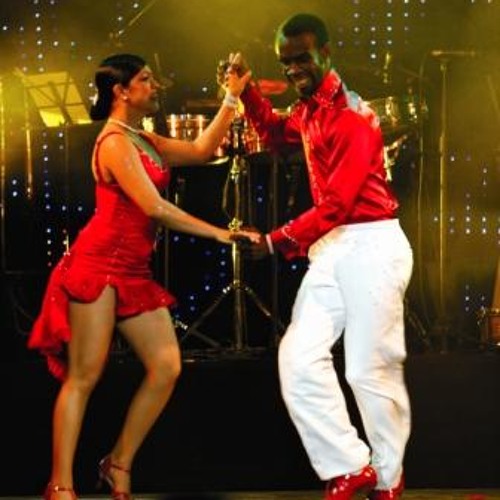
Compared to bomba, plena and danza, cha-cha is pretty much a newcomer. It was originated in Cuba in the 1950s by composer Enrique Jorrin, who developed the music by the same name. The name of this dance comes from the sound the shoes make on the dance floor. The cha-cha is a spinoff of mambo, the Latin dance of Cuba. In today’s competitions, the dance has become more of a blend of salsa and cha-cha.
Since you are here, we would like to share our vision for the future of travel – and the direction Culture Trip is moving in.
Culture Trip launched in 2011 with a simple yet passionate mission: to inspire people to go beyond their boundaries and experience what makes a place, its people and its culture special and meaningful — and this is still in our DNA today.
 We are proud that, for more than a decade, millions like you have trusted our award-winning recommendations by people who deeply understand what makes certain places and communities so special.
We are proud that, for more than a decade, millions like you have trusted our award-winning recommendations by people who deeply understand what makes certain places and communities so special.Increasingly we believe the world needs more meaningful, real-life connections between curious travellers keen to explore the world in a more responsible way. That is why we have intensively curated a collection of premium small-group trips as an invitation to meet and connect with new, like-minded people for once-in-a-lifetime experiences in three categories: Epic Trips, Mini Trips and Sailing Trips. Our Trips are suitable for both solo travellers and friends who want to explore the world together.
Epic Trips are deeply immersive 8 to 16 days itineraries, that combine authentic local experiences, exciting activities and enough down time to really relax and soak it all in. Our Mini Trips are small and mighty - they squeeze all the excitement and authenticity of our longer Epic Trips into a manageable 3-5 day window.
 Our Sailing Trips invite you to spend a week experiencing the best of the sea and land in the Caribbean and the Mediterranean.
Our Sailing Trips invite you to spend a week experiencing the best of the sea and land in the Caribbean and the Mediterranean.We know that many of you worry about the environmental impact of travel and are looking for ways of expanding horizons in ways that do minimal harm – and may even bring benefits. We are committed to go as far as possible in curating our trips with care for the planet. That is why all of our trips are flightless in destination, fully carbon offset - and we have ambitious plans to be net zero in the very near future.
Puerto Rico Salsa & Bachata Dancing Clubs, Events Calendar, Classes, Parties
Click your picture for more
+
Add Event
Puerto Rican Salsa utilizes clean lines, and may be performed "on one" or "on two". Also, it is widely thought that "shines" originated with the Puerto Rican style. These are moments where a soloist salsa dancers performs complex, quick footwork and "shines" individually for the audience.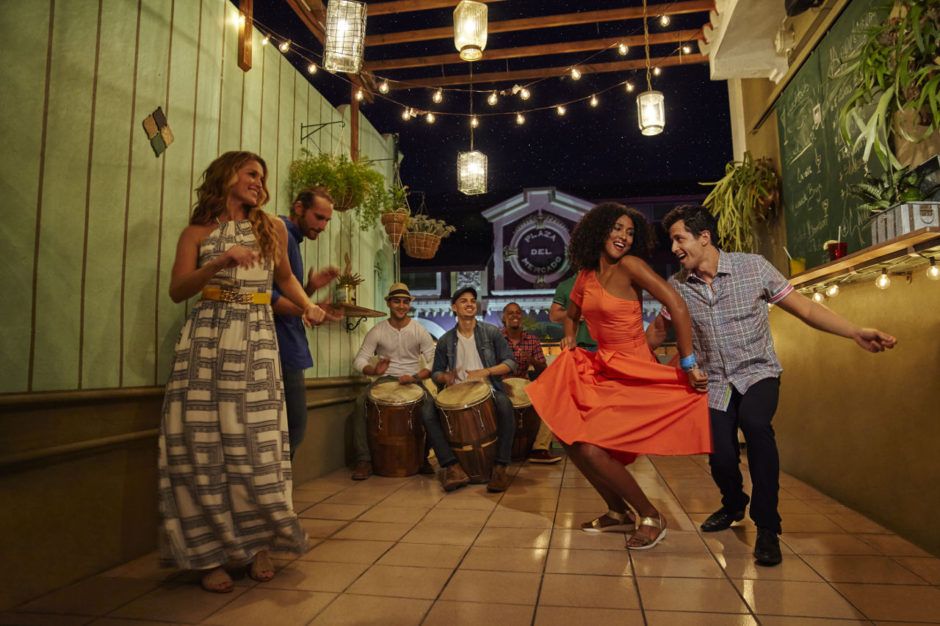 Shimmies are also common Puerto Rican Salsa Style moves. Numerous salsa dancing events and parties in Puerto Rico (San Juan, Carolina, Isla Verde, Rio Grande) are happening daily that we publish in our Salsa & Bachata Dancing Puerto Rico Calendar. Find social salsa events every night, latin parties, best Salsa Clubs in Puerto Rico and popular places to dance salsa, lugares para bailar, salsa classes near you, free lessons, bachata, mambo, kizomba, live salsa music events, concerts and festivals. Add Your Events FREE!
Shimmies are also common Puerto Rican Salsa Style moves. Numerous salsa dancing events and parties in Puerto Rico (San Juan, Carolina, Isla Verde, Rio Grande) are happening daily that we publish in our Salsa & Bachata Dancing Puerto Rico Calendar. Find social salsa events every night, latin parties, best Salsa Clubs in Puerto Rico and popular places to dance salsa, lugares para bailar, salsa classes near you, free lessons, bachata, mambo, kizomba, live salsa music events, concerts and festivals. Add Your Events FREE!
TODAY - Friday, Nov 11, 2022
-
FREE Social
Live Dance Music Fridays @ Red Coral Lounge
November 11 - November 12 @ 8pm - 2am | Weekly - Fridays
Red Coral Lounge at SJ Marriott Resort, 1309 Ashford Ave, San Juan, 00907, Puerto Rico
Red Coral Lounge at SJ Marriott Resort/Stellaris Casino. Live dance music begins at 8:00pm. Go to the best space in Puerto Rico, where you can dance and enjoy .
 ..
.. -
FREE Social
Salsa Night Fridays @ Intercontinental San Juan
November 11 - November 12 @ 9pm - 1am | Weekly - Fridays
InterContinental San Juan, 5961 Av. Isla Verde, Carolina, 00979, Puerto Rico
Salsa Nights are back! Join us every Friday, admission is free, drink specials and bottle service are available all night. Starts at 9:00 p.m. with DJ then ...
-
Social
Salsa Dancing Fridays At Taberna Los VáZquez
November 11 - November 12 @ 11pm - 1am | Weekly - Fridays
Taberna Los Vazquez, 1348 Calle Orbeta, San Juan, 00907, Puerto Rico
Every Friday there's live salsa music and dancing at Taberna Los Vzquez. We are going to meet in La Placita. For a fun night of Salsa dance and socializing. We ...
Saturday, Nov 12, 2022
-
$39 Beginner
Salsa 1 @ Your Style Academy
November 12 @ 10am - 11am | Weekly - Saturdays
Your Style Academy, Cll 6, San Juan, 00926, Puerto Rico
Offering you a high quality service and the latest technologies as tools to facilitate learning and growth on the track of each student.

-
$39 Beginner
Salsa 2 @ Your Style Academy
November 12 @ 10am - 11am | Weekly - Saturdays
Your Style Academy, Cll 6, San Juan, 00926, Puerto Rico
Our mission is to analyze the needs of our students to teach, educate and motivate them in each of their lessons, thus developing teaching strategies that help ...
-
$39 Intermediate
Salsa Intermediate @ Your Style Academy
November 12 @ 1pm - 2pm | Weekly - Saturdays
Your Style Academy, Cll 6, San Juan, 00926, Puerto Rico
Whatever your need or the level of dance you want to achieve, you will surely enjoy it to the fullest with us.
-
FREE Social
Tropicalia Saturdays | Live Music & Entertainment @ El San Juan Hotel
November 12 - November 13 @ 8pm - 1am | Weekly - Saturdays
El San Juan Hotel, 6063 Av.
 Isla Verde, Carolina, 00979, Puerto Rico
Isla Verde, Carolina, 00979, Puerto Rico Enjoy the dazzling energy of Tropicalia Saturdays with the Hotel's residency band Tropicalia featuring a selection of Puerto Rico's top Rumba musicians ...
-
FREE Social
Live Dance Music Saturdays @ Red Coral Lounge
November 12 - November 13 @ 8pm - 2am | Weekly - Saturdays
Red Coral Lounge at SJ Marriott Resort, 1309 Ashford Ave, San Juan, 00907, Puerto Rico
Live dance music begins at 8:00pm. The Red Coral Lounge at SJ Marriott Resort is popular with visitors and San Juan locals. Our vibrant lounge offers ...
-
Social
Salsa Dancing Saturdays At Taberna Los VáZquez
November 12 - November 13 @ 11pm - 1am | Weekly - Saturdays
Taberna Los Vazquez, 1348 Calle Orbeta, San Juan, 00907, Puerto Rico
Every Satruday there's live salsa music and dancing at Taberna Los Vzquez.
 Actually, almost every day of the week there's dancing at this laid-back bar on the ...
Actually, almost every day of the week there's dancing at this laid-back bar on the ...
Sunday, Nov 13, 2022
-
Social
Latin Music @ Picante Lounge (Courtyard By Marriot)
November 13 - November 14 @ 7pm - 1am | Weekly - Sundays
Picante Lounge, Courtyard Isla Verde Beach Resort, 7012 Calle Avenue Boca de Cangrejos, Carolina, 00979, Puerto Rico
Courtyard by Marriot Picante Lobby Bar in Isla Verde. Latin music begins at 7pm. Sip on signature Caribbean cocktails while enjoying live music at Picante ...
-
FREE Social
Live Dance Music Sundays @ Red Coral Lounge
November 13 - November 14 @ 8pm - 1am | Weekly - Sundays
Red Coral Lounge at SJ Marriott Resort, 1309 Ashford Ave, San Juan, 00907, Puerto Rico
The Red Coral Lounge is located at the San Juan Marriott Resort Stellaris Casino. Do not stay at home, come dance on Sunday.
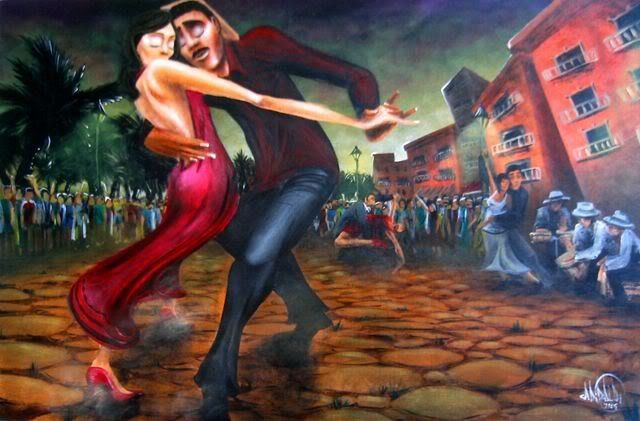 Live music at 8pm.
Live music at 8pm. -
FREE Social
Shing A'ling - Live Sasla Sundays @ La Factoria
November 13 - November 14 @ 10pm - 2am | Weekly - Sundays
La Factoría, 148 Calle San Sebastián, San Juan, 00901, Puerto Rico
The innermost bar of La Factora is a popular spot among locals and visitors who are thirsty for salsa dancing. Our main dance hall and a local favorite where ...
Monday, Nov 14, 2022
-
Class
Martes De Salsa - Beginner Class
November 14 @ 7pm - 8pm | Weekly - Mondays
Casa Santurce, 1050 Calle Mariana, San Juan, 00907, Puerto Rico
Beginner Salsa Class. Come and Mingle! Hosted by Santurce Salsa Club. We meet at Casa Santurce. On the Patio of the Hotel at 7 pm :)
-
$40 Beginner
Basic Sauce For Beginners @ Essence Dance Academy
November 14 @ 7pm - 8:30pm | Weekly - Mondays
Essence Dance Academy, C.
 Loíza, San Juan, 00913, Puerto Rico
Loíza, San Juan, 00913, Puerto Rico You want to know and develop your social dance, but you do not have much experience, you are afraid to dare to dance. This course will help you understand ...
-
FREE Social
Shing A'ling - Live Sasla Mondays @ La Factoria
November 14 - November 15 @ 10pm - 2am | Weekly - Mondays
La Factoría, 148 Calle San Sebastián, San Juan, 00901, Puerto Rico
Our main dance hall and a local favorite where every Monday you can get down to live salsa by La 51. Latin music in the back room. After 10pm. Craft Cocktail ...
Tuesday, Nov 15, 2022
-
$39 Beginner
Salsa 1 @ Your Style Academy
November 15 @ 7pm - 8pm | Weekly - Tuesdays
Your Style Academy, Cll 6, San Juan, 00926, Puerto Rico
We are sure that you will find everything you need here. Your Style Academy was founded in 2008 by specialists in Salsa and Tropical Rhythms.
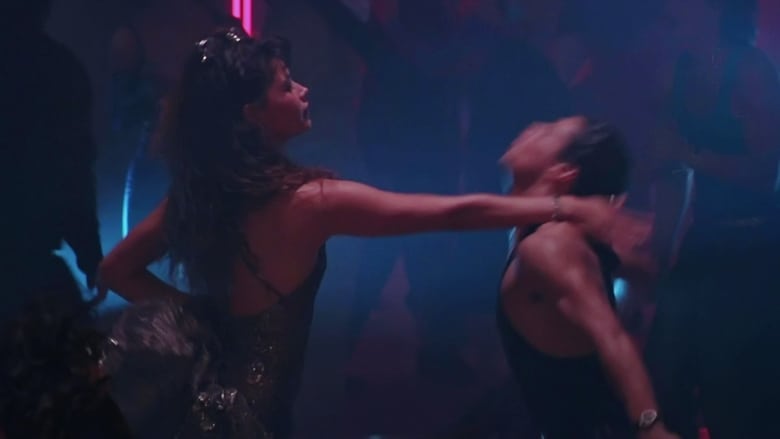 Our main ...
Our main ... -
$40 Beginner
Salsa Level 2 @ Essence Dance Academy
November 15 @ 7pm - 8:30pm | Weekly - Tuesdays
Essence Dance Academy, C. Loíza, San Juan, 00913, Puerto Rico
Develop your social dance With this Level 2 Salsa Course
-
$39 Beginner
Salsa 2 @ Your Style Academy
November 15 @ 8pm - 9pm | Weekly - Tuesdays
Your Style Academy, Cll 6, San Juan, 00926, Puerto Rico
Our passion is to help them improve their quality of life and general well-being. We are sure that you will be glad you chose us.
Wednesday, Nov 16, 2022
-
$40 Intermediate
Intermediate Level Salsa @ Essence Dance Academy
November 16 @ 7pm - 8:30pm | Weekly - Wednesdays
Essence Dance Academy, C. Loíza, San Juan, 00913, Puerto Rico
DEVELOP YOUR SOCIAL DANCE With this Intermediate Level Salsa Course, we will be working on turns of greater difficulty such as changes of direction and .
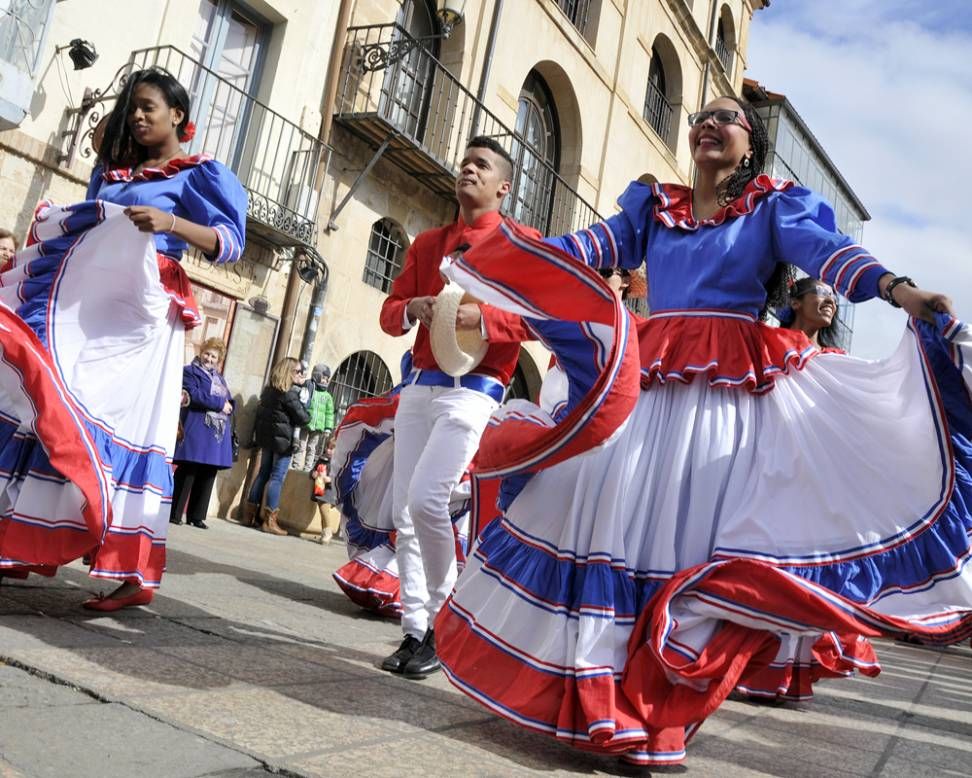 ..
.. -
FREE Social
Sounds Of Puerto Rico Wednesdays @ El San Juan Hotel Lobby Bar
November 16 - November 17 @ 8:30pm - 1am | Weekly - Wednesdays
El San Juan Hotel, 6063 Av. Isla Verde, Carolina, 00979, Puerto Rico
Every Wednesday - A showcase of popular Puerto Rican sounds such as salsa, rumba, and Caribbean rhythms, allowing guests, locals and travelers alike to ...
Thursday, Nov 17, 2022
-
$40 Beginner
Salsa Level 2 @ Essence Dance Academy
November 17 @ 7pm - 8:30pm | Weekly - Thursdays
Essence Dance Academy, C. Loíza, San Juan, 00913, Puerto Rico
With this Level 2 Salsa Course, you must have mastery of the basic fundamentals and we will be working on combinations of social laps and free steps.
-
$39 Intermediate
Salsa Intermediate @ Your Style Academy
November 17 @ 8pm - 9pm | Weekly - Thursdays
Your Style Academy, Cll 6, San Juan, 00926, Puerto Rico
Our vision is to be recognized by our students as their first and best alternative when selecting their dance learning enrichment and for each student to .
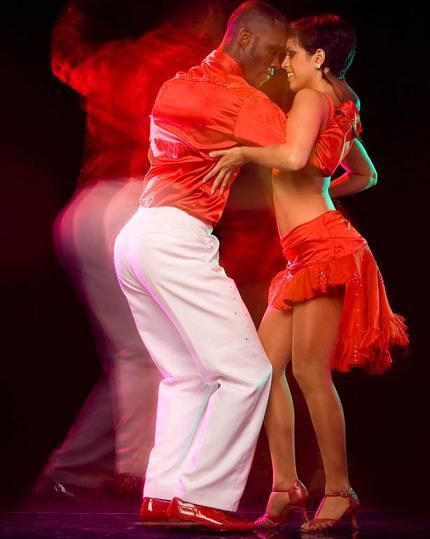 ..
.. -
Social
Live Dance Music Thursdays @ Red Coral Lounge
November 17 - November 18 @ 8pm - 1am | Weekly - Thursdays
Red Coral Lounge at SJ Marriott Resort, 1309 Ashford Ave, San Juan, 00907, Puerto Rico
The best live music and entertainment in Condado (San Juan). Come enjoy in the Red Coral Lounge (SJ Marriott Resort) - live music at 8pm.
-
Social
Noche De Salsa @ Vaca Brava
November 17 @ 8:30pm - 11pm | Weekly - Thursdays
Vaca Brava, Local 2-2, #29 Calle Recinto Sur, San Juan, 00901, Puerto Rico
Come and enjoy spectacular night, with the best Salsa DJ. Music for the dancers. Entrance completely free! You can not lose this. Vaca Brava is a creative ...
-
FREE Social
Sounds Of Puerto Rico Thursdays @ El San Juan Hotel Lobby Bar
November 17 - November 18 @ 8:30pm - 1am | Weekly - Thursdays
El San Juan Hotel, 6063 Av.
 Isla Verde, Carolina, 00979, Puerto Rico
Isla Verde, Carolina, 00979, Puerto Rico Thursdays Weekly - A showcase of popular Puerto Rican sounds such as salsa, rumba, and Caribbean rhythms, allowing guests, locals and travelers alike to ...
-
Social
Salsa Nights Thursdays @ Piso Viejo
November 17 - November 18 @ 9pm - 2am | Weekly - Thursdays
Piso Viejo Bar, 1917 Calle Loíza, San Juan, 00911, Puerto Rico
BEST SALSA BAR IN SAN JUAN, PUERTO RICO. Thursdays are Salsa Nights and along with a live orchestra they also offer free salsa dancing lessons. Occasionally ...
-
Social
Live Salsa @ Cafe Ocho At BahíA Urbana
November 17 @ 9:30pm - 11pm | Weekly - Thursdays
Pier 8, Muelle 8, San Juan, 00901, Puerto Rico
Cafe 8 (Ocho) at Baha Urbana (in Old San Juan) Live Salsa band. Free admission. Door open at 7pm with drink specials. Live music from 9:30pm.
 Caf Ocho an open ...
Caf Ocho an open ...
See More Events
SIGN UP OR LOG IN TO DANCEUS.ORG
Get Event's Info & Contacts, Add/Find Events & Schools and more!
Sign in with Facebook
By clicking above, you accept our Terms Of Service and Privacy Policy.
or
Login with your credentials:
New User? CREATE AN ACCOUNT >
SIGN UP OR LOG IN TO DANCEUS.ORG
Get Event's Info & Contacts, Add/Find Events & Schools and more!
Sign in with Facebook
By clicking above, you accept our Terms Of Service and Privacy Policy.
or
Login with your credentials:
New User? CREATE AN ACCOUNT >
Error
An error has occurred
What is salsa dance?
Contents
A language that can be easily communicated in any country - this is how they say about the most popular social dance - salsa. The direction with a rich history has long gone beyond the traditional framework and turned into a real subculture. Salsa is a global movement, a universal means of communication for dancers, as well as a unique method of revealing oneself as a person. And - most importantly: you can master the direction with a "spicy" name at any age!
The direction with a rich history has long gone beyond the traditional framework and turned into a real subculture. Salsa is a global movement, a universal means of communication for dancers, as well as a unique method of revealing oneself as a person. And - most importantly: you can master the direction with a "spicy" name at any age!
The history of salsa
This hot Latin American dance is now like a locomotive, followed by a large number of other social movements, such as bachata, merengue and, for example, reggaeton. All of them, in a sense, are inferior to salsa in popularity, because it has been danced all over the world for several decades - from Australia to Belarus, from Hong Kong to Paris.
Salsa originally came from the island of Liberty. Her music is a mix of Cuban (danzón and rumba), North American (rock and jazz), Caribbean (bomba and cumbia) and South American (tango and samba) motifs. Interestingly, the name "salsa" is not a coincidence with hot sauce. At first, the musical style “sleep”, popular in the middle of the last century, called for “adding a spark” - “Echale Salsita”. And then the famous “king of mambo” Tito Puente at the concert, looking at the enthusiastically dancing couples, exclaimed “Esto es una gran salsa” (“This is a great sauce! (Hash)”), and the incendiary direction no longer parted with its new name.
In the middle of the last century, salsa began its march around the world. In the 70s, she ended up in New York, where Cuban and Puerto Rican immigrants had fun at dance parties after work. Quite quickly, salsa turned from a folk dance into a full-fledged social direction, and then into an integral part of American leisure. In the states, salsa underwent a bit of a transformation, but it was still recognizable by its four-quarter time signature, fast tempo, and complex rhythm. Her inherent energy, sexuality and intimacy of partners remained unchanged. In the 80s, the popularity of salsa subsided a bit, but in the 90 erupted with even greater force: by the end of the century, they began to dance it in all major cities of the planet.
Sign up for a trial lesson
Features of salsa
Like many other social movements, salsa is a flirtatious dance. At the same time, there are no permanent partners in it, it is entertainment for free and non-jealous natures. He leads, she follows and decorates. It is important to dance this dance easily and naturally, therefore, even in the process of learning salsa, it is customary to constantly change partners in order to learn how to feel any “partner”. Experienced dancers can really dance salsa with any partner, anywhere in the world, the first time. And it will look as if the couple had been rehearsing for hours in the hall.
Salsa is also considered a great way to improve yourself, both internally and externally. It perfectly develops creative abilities, the ability to improvise, teaches you to feel the rhythm and not be afraid to communicate with strangers. And this direction also requires a flexible body, good reaction and endurance.
All this comes in the process of learning.
Unlike ballroom dancing, where competition is the focus of the performers, social dances do not set the task of “dancing” someone. The purpose of salsa is to entertain the performer, to give him the opportunity to move for pleasure, to relax after work and tiring everyday worries. It is no accident that special salsa evenings are regularly held around the world, and often on weekdays. Dozens of salsa lovers gather in the heart of St. Petersburg to dance with each other in the open air. Our white nights give such parties a special charm!
How to learn to dance salsa?
In order to master this dance direction, you do not need a young age or relevant experience on the floor. In salsa, you do not need to work out every movement, experience is learned already on the dance floor! A couple of synchronized steps with a partner, a few smooth movements of the hips, a smile, a mysterious look - and now you are already performing "salsa romance"! It remains only to hone your skills by changing partners and communicating with them in the dance language. We are sure that salsa will give you real joy, and these sensations are difficult to compare with something else.
We are sure that salsa will give you real joy, and these sensations are difficult to compare with something else.
If you have a sincere desire, you can learn how to move freely to Latin American rhythms in a matter of months. True, for this it is not enough just to download a couple of video lessons and rehearse on your own at the mirror. At a minimum, a partner is needed, as a maximum, a group of like-minded people and an experienced teacher. All this you can get in the dance club "La boca"! We are waiting for you every day!
Types of salsa. History of Salsa (Salsa)
There are a number of legends around the words "rhythm in salsa" and "how to dance salsa to rhythm". Without delving into theoretical disputes and buzzwords here, we will try to determine the minimum circle of knowledge, necessary for novice LA salsa and Casino salsa dancers to figure out - what is salsa rhythm and how to “correctly” (in rhythm) dance salsa?
Salsa.
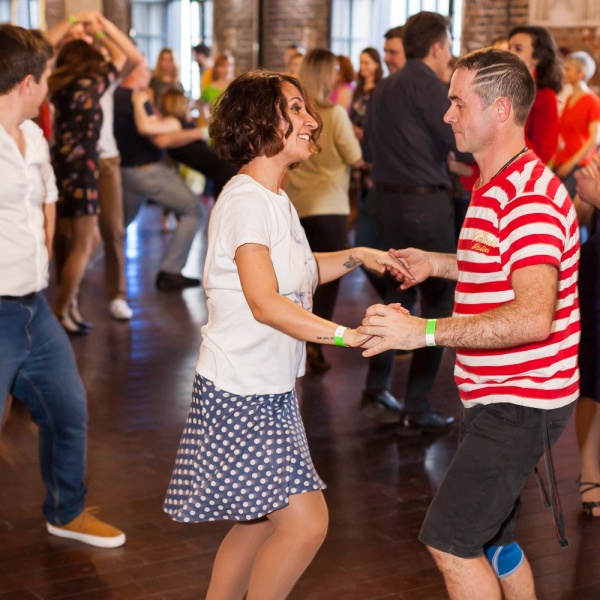 A little about music
A little about music Well, if we look for the definition of salsa on the Internet, then with a high degree of probability we will find it replicated on various sites, copied from each other content. Something like here this . But what do the words "salsa is 4/4" mean? What is "tact"? What is this “complex combination of tumbao and son clave rhythms”?!
If you have several classes of a music school behind you, you can safely move on to the next section. If not, then for starters, a few definitions (in principle, it is possible without them, because something is already intuitively clear, but still it’s better to dot the “Y”)
Duration
Music on paper is written in signs - notes. A note has two main characteristics - tone and duration. The duration of a note (or rest) is not associated with any absolute durations, it can only be represented in relation to durations of other notes. For the unit of measurement of duration, they take the so-called. "whole note" And all other durations are multiples of an integer. Those. each subsequent duration is obtained by dividing by two: 1/2, 1/4, 1/8, etc. The most popular musical share is 1/4 (quarter). In this regard, the whole note is denoted as 4/4.
"whole note" And all other durations are multiples of an integer. Those. each subsequent duration is obtained by dividing by two: 1/2, 1/4, 1/8, etc. The most popular musical share is 1/4 (quarter). In this regard, the whole note is denoted as 4/4.
The duration of a whole note is determined by the tempo. Conventionally, we can say that a whole note at a moderate tempo lasts as long as it takes to pronounce: one-two-three-four.
The ratio of durations of sounds (notes, claps, knocks, etc.) and pauses in their sequence is called rhythm.
Measure and beat
Time signature (meter) is a pattern of uniform alternation of strong (louder) and weak beats in time. All beats, from strong to the next strong, are combined into a group called a bar. Those. the very first beat of the measure is strong (the loudest, accented). It is the boundary of the measure. The number of beats in a bar is called the time signature. 4/4 (four quarters) is the most common time signature in music.
In 4/4 time, the 1st quarter is the most metrically strong, the 3rd quarter is the next in metrical significance. Regarding them, the 2nd and 4th quarters are considered weak. But in tripartite time (3/4), the strongest share is the first, and the second and third are weak. It is easy to imagine the size of three quarters after losing any waltz in your mind: PAM-pam, pam - PAM-pam, pam ...
Size (meter) salsa music - 4/4
So, we have come to the answer to the question, what does the phrase “salsa has a 4/4 time” mean. This means that a bar in salsa consists of four beats, the first of which is accented, and the time signature of each beat is 1/4 of a whole note. This is how two bars in a row look like (why there are eight counts we will analyze a little later):
At the same time, it should be remembered that the time signature 4/4 means that a strong (“loud”, “percussive”) beat in salsa appears with a period of every four beats:
It should be noted that the salsa meter is complex, while every second measure begins with a conventional strong beat (slightly less strong than in the first measure) - from which the words meaningless to a normal person appeared: “phrasing with a period of two measures”.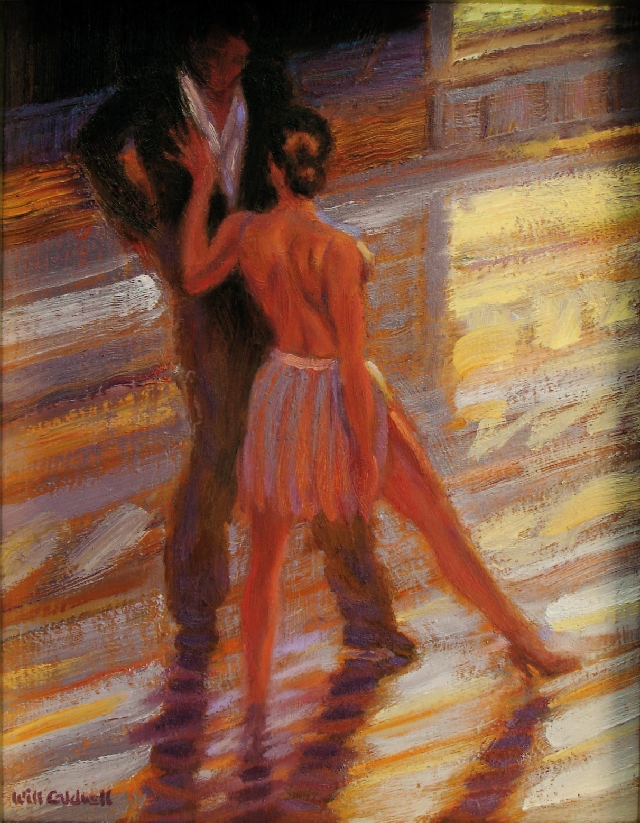 Understanding salsa sizing has a direct impact on how quickly you get started dance salsa correctly , to the rhythm. By the way, if you have read up to this point, then you are a really passionate person and really want to learn how to dance salsa. We, at the site, appreciate and respect such enthusiasts - by naming the code word "salsa-rhythm", you can get a discount on salsa classes at our school.
Understanding salsa sizing has a direct impact on how quickly you get started dance salsa correctly , to the rhythm. By the way, if you have read up to this point, then you are a really passionate person and really want to learn how to dance salsa. We, at the site, appreciate and respect such enthusiasts - by naming the code word "salsa-rhythm", you can get a discount on salsa classes at our school.
Salsa as a dance. Basic step
And so, the basic steps of salsa (yes, we finally got to this point!). In practice, because of the complex meter, dancers divide salsa music into 8 beats. Those. combine two measures into one elementary figure - the basic step. For every 4 beats in the music, 3 steps are taken. Walking means weight transfer! This is a very important idea, please remember it!
As a rule, the dance starts on the strong beat. In the salsa-LA style, the parterre steps on a strong beat (in English - downbeat) forward with the left foot, as if “squeezing out” the partner’s left leg, and the partner, respectively, steps back with the right foot.
Salsa Basic Steps - Video
Performing the basic step, the dancers change direction twice. This change of direction is referred to as a "break step" (please don't confuse it with an "open-break" salsa figure!). If a dancer does a break-step on "1" and "5", they say that he is "dancing for one". If a dancer does a break-step on "2" and "6", then he is "dancing for two".
There are different ways to count the basic step in salsa dance:
- one-two-three-four; five-six-seven-eight (most complete)
- one-two-three-and; five-six-seven-and (four and eight are too long words)
- times…. five ... (we count only strong beats, we mean the rest, it is so convenient to count LA)
- one-two-three-e; one-two-three-e; (this is how the Cubans like to count, without taking into account the compound meter)
- fast-fast-slow; fast-fast-slow (“fast” is one beat, and “slow” is two beats.)
Which of them is the most suitable for training in each particular school of salsa is decided by specific teachers.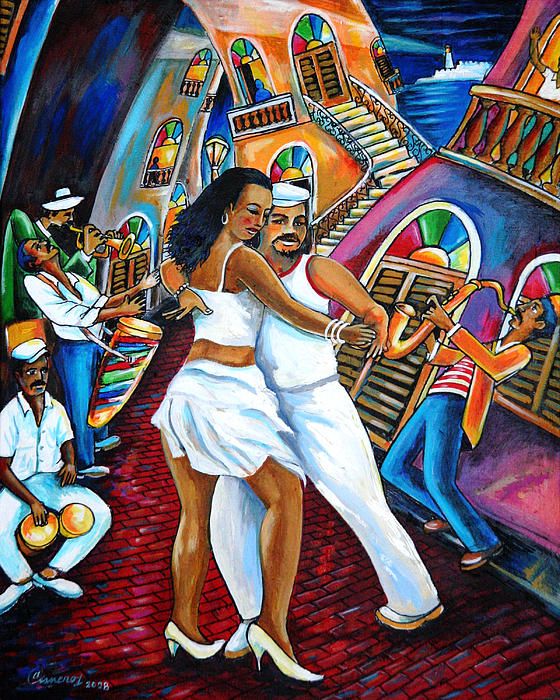 IMHO all of these ways are somehow "correct".
IMHO all of these ways are somehow "correct".
Four Rhythms in Salsa
Generally speaking, dancing to the rhythm of salsa is not a trivial task. :) This is not merengue and not pop music with a dimension of 2/4 under which they dance the hustle! The main problem is that different tools on which salsa is played, they immediately set MULTIPLE rhythmic patterns at the same time! So which one should you dance to?
It is often said that in order to dance salsa to the rhythm, you need to hear the rhythm of the clave and dance in the clave. To be honest, if I were just starting to dance salsa now, then most likely I would just bite off the head of anyone, who would advise to learn to dance in the clave. Just because, alas, I'm not a genius.
Well, of course, if your sense of rhythm is excellent enough to build the rhythm of steps based on mismatched with him rhythm with the clave, then that's exactly what you need to do! Listen to the clave, build that rhythm based on it in which you will step and do not forget about the lead, partner, follow the style.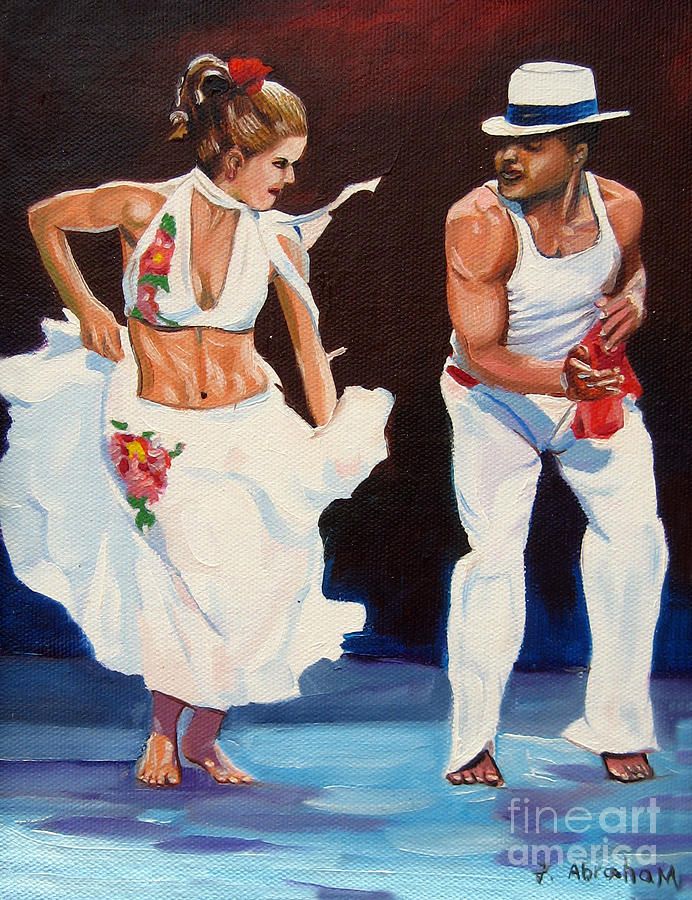 And you will be just great! I guarantee.
And you will be just great! I guarantee.
Is it realistic for a beginner? Fortunately, there is a more realistic way than dancing while listening to the clave. Well, let's talk about rhythms in salsa and try to answer the question of which of the rhythms is easiest to dance to.
Clave, rhythm N1 in salsa
Musicians claim that all other rhythms in salsa are determined by the clave rhythm, but if you are a beginner dancer, then my advice to you is not to bother yourself with this too much. You can read about the clave a bunch of everything on the Internet and I will not retell it here. The only thing you need to know right now is that the clave is both a rhythm and a musical instrument. from two wooden sticks with which they knock against each other. Salsa uses two fundamentally different clave rhythms 3-2 and 2-3. We omit here the discussion of what is called Son Clave, noting only that Son Clave can be either 3-2 or 2-3.
The 2-3 rhythm is more common in salsa music.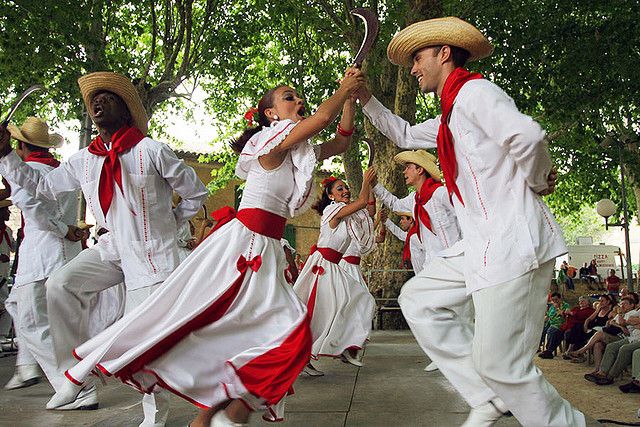 Speaking below about other salsa rhythms, we will mean exactly salsa with clave rhythm 2-3. It makes no sense to describe the rhythm, you just need to listen to examples. It should be noted that although the clave rhythm “lives” in any salsa, defining other rhythms, but in a particular composition it is not at all necessary to explicitly play it on the clave or any other instrument. And finally, the first blow in the clave 3-2 coincides with the count of "times" in the dance. It can be quite useful to know if the 3-2 clave is audible, for example, at the very beginning of a melody, while the main instruments have not yet played.
Speaking below about other salsa rhythms, we will mean exactly salsa with clave rhythm 2-3. It makes no sense to describe the rhythm, you just need to listen to examples. It should be noted that although the clave rhythm “lives” in any salsa, defining other rhythms, but in a particular composition it is not at all necessary to explicitly play it on the clave or any other instrument. And finally, the first blow in the clave 3-2 coincides with the count of "times" in the dance. It can be quite useful to know if the 3-2 clave is audible, for example, at the very beginning of a melody, while the main instruments have not yet played.
Cowbell, rhythm N2
The rhythm created by the instrument of the same name, whose sound is similar to the sound of a clattering bell, coincides with beats 1, 3, 5, 7. If you are a beginner dancer, learn how to distinguish it from other salsa rhythms, because 1, 3, 5, 7 are the most accented counts in LA and Casino salsa and completely coincide with the steps.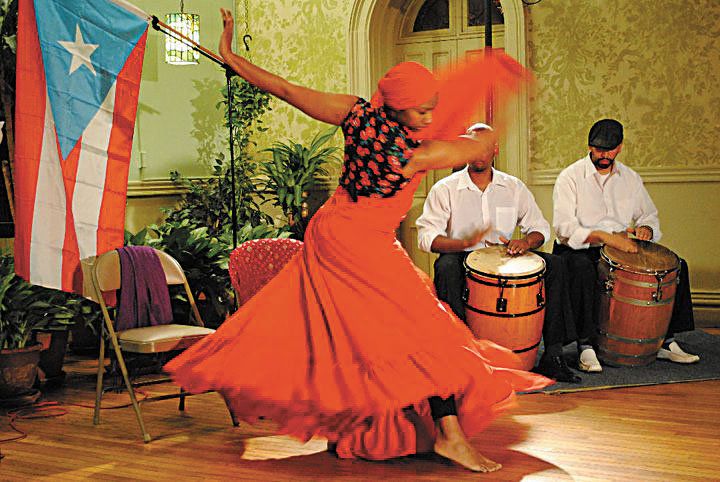
Montuno, rhythm N3. The rhythm that will help you dance salsa.
Rhythm montuno is a rhythm often played on the piano. Perhaps this is the most valuable rhythm for salsa dancers on the “one”. Rhythm montuno is repeated every 8 beats, its accent is on the first beat of the first bar. Thus, the dancer can easily distinguish between the count of “one” and “five” and understand whether to step forward or backward.
Tumbao, rhythm N4
Tumbao is the rhythm played on conga drums. The tumbao rhythm intensifies on the second and sixth beats, which corresponds to the break-step dancing on 2. Actually, despite the fact that there are techniques for finding the count of “two” on tumbao and klwae, but if you just start dancing on 2, then it’s still easier to find “one” in the music and just count one beat - it will be very difficult to make a mistake!
Let's illustrate the above with the following video example:
With the help of a special program on this site, you can visualize the rhythm of salsa
and listen to how different instruments sound together and separately in salsa:
Salsa (Spanish Salsa - "sauce") - a style of music and dance that originated in Cuba in the early 20th century.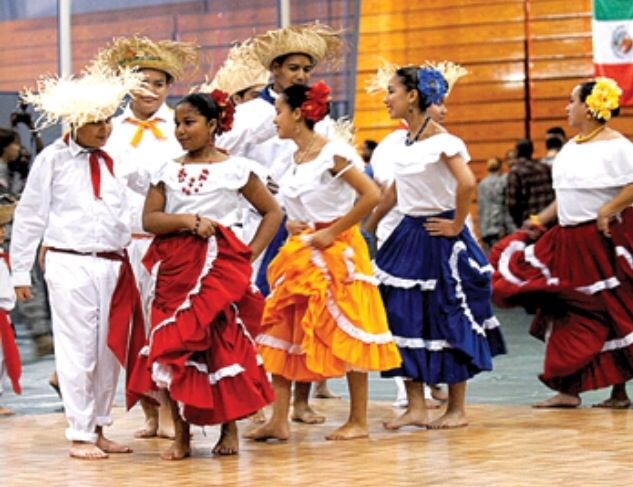 It is of Afro-Cuban origin, although it reached significant development in the United States in the seventies. Once there, along with the music and culture of immigrants, salsa turned from folklore into universal social dance . Today "salsomania" embraces many people in all corners of the world.
It is of Afro-Cuban origin, although it reached significant development in the United States in the seventies. Once there, along with the music and culture of immigrants, salsa turned from folklore into universal social dance . Today "salsomania" embraces many people in all corners of the world.
It would seem, what do salsa and sauce have in common? And in fact, it is a delicious mixture of traditional rhythms of many national cultures: Cuban (son, rumba), North American (jazz, rock, swing), Caribbean (bomba, cumbia), South American (samba, tango). Important in salsa is improvisation and the idea of flirting. There are no strict rules in salsa , but can be distinguished 2 types and 4 main traditional styles , each of which has its own characteristics: circular salsa, including 2 styles - Cuban salsa or and ; linear salsa (Cross body style) includes , styles. It is considered a separate type - where the partners are transferred in turn to the partners that dance in a circle.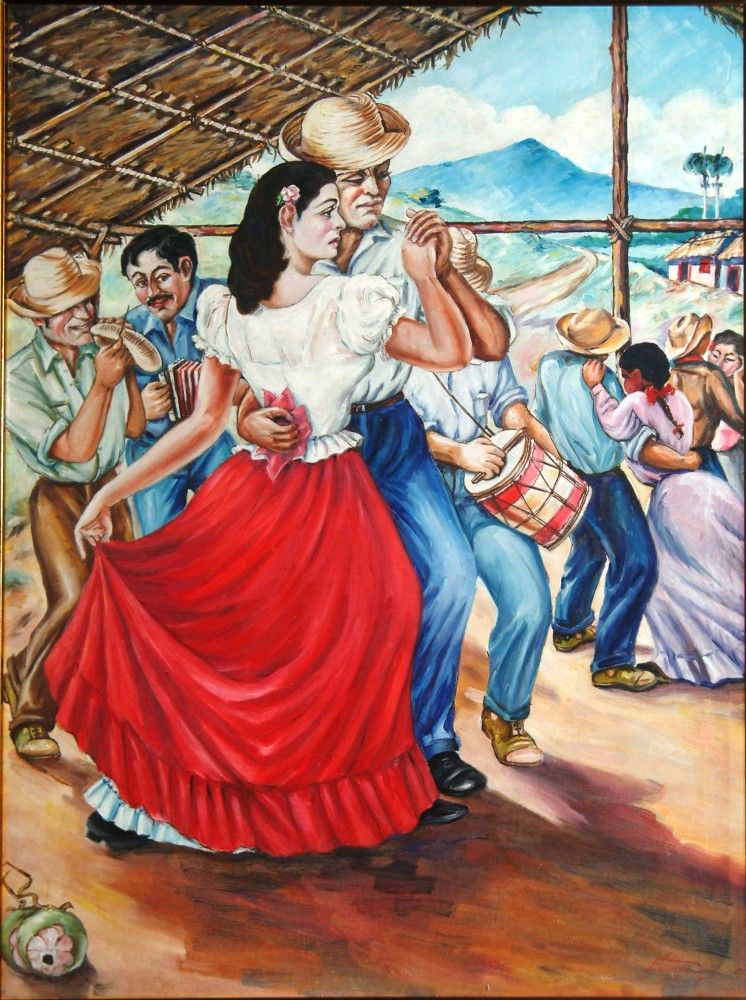
salsa dancing in clubs, bars, on the street, on the beach, wherever there are incendiary rhythms!
Salsa styles:
Colombian Salsa - The basic step is danced to any beat of the music, the beat may change during the dance. This style uses both circular and linear elements equally. A distinctive feature of the style is the presence of a large number of footworks, as well as the use of acrobatic elements.
Salsa New York - style as the name suggests was created in New York, created by Eddie Torres based on the Cuban son. The main step is danced to a weak beat of the music. There are many movements in this style of salsa, where the partner gracefully defiles past the partner. The style is linear with a fast and dynamic tempo, but with a very delicate lead. The New York style is characterized by the presence of a large number of solo compositions, pauses and musical accents.
Salsa Los Angeles - The main step is danced to the strongest beat of the music: on the count of 1, the partners step forward.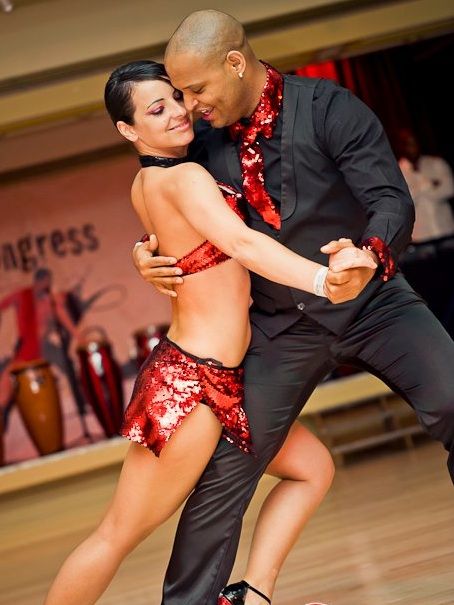 The style is linear with a fast and dynamic tempo, many fast combinations are used. The use of many acrobatic elements is typical, and speed and clarity of performance are also very important for style.
The style is linear with a fast and dynamic tempo, many fast combinations are used. The use of many acrobatic elements is typical, and speed and clarity of performance are also very important for style.
Salsa Casino - This is a Cuban style of salsa that began to develop from the middle of the 20th century. The style is based on traditional Cuban music and the dances of the son and guaracha. The basic step is danced to any beat of the music, but most often to the first. Casino salsa is a circular style of salsa, but it also has linear elements. A feature of the style are complex figures with hands.
Rueda de Casino - during the dance, the partners pass the partners in a circle.
Dominican Salsa - The basic step is danced to any beat of the music, the beat may change during the dance. It is a circular salsa style, with linear elements. A feature of the style is impulsive driving.
Salsa Puerto Rico - Partners begin to dance the basic step forward.
Rules for protecting information about site users site
1. General provisions
1.1. These Rules are an official document of SP Sobiray Pavel Evgenievich (hereinafter referred to as the Site Administration), and determine the procedure for processing and protecting information about individuals using the services of the Internet site (hereinafter referred to as the Site) and its services (hereinafter referred to as Users).
1.2. The purpose of these Rules is to ensure adequate protection of information about users, including their personal data, from unauthorized access and disclosure.
1.3. Relations related to the collection, storage, distribution and protection of information about users of the Site are governed by these Rules, other official documents of the Site Administration and the current legislation of the Russian Federation.
1.4. The current version of the Rules, which is a public document, is available to any Internet user by clicking on the link. The Site Administration has the right to make changes to these Rules. When changes are made to the Rules, the Site Administration notifies users of this by posting a new version of the Rules on the Site at a permanent address no later than 10 days before the entry into force of the relevant changes.
The Site Administration has the right to make changes to these Rules. When changes are made to the Rules, the Site Administration notifies users of this by posting a new version of the Rules on the Site at a permanent address no later than 10 days before the entry into force of the relevant changes.
1.7. By using the Site, the User agrees to the terms of these Rules.
1.8. If the User disagrees with the terms of these Rules, the use of the Site and its services must be immediately terminated.
2. Terms of use of the Site
2.1. Providing services for the use of the Site and its services (hereinafter referred to as the Site Services), the Site Administration, acting reasonably and in good faith, believes that the User:
has all the necessary rights to allow him to register and use this Site; indicates reliable information about himself to the extent necessary to use the Services of the Site; acquainted with these Rules, agrees with them and assumes the rights and obligations specified in them.
2.2. The Site Administration does not verify the accuracy of the received (collected) information about users, except when such verification is necessary in order to fulfill the obligations of the Site Administration to the user.
3. Purposes of information processing
The Site Administration processes information about Users, including their personal data, in order to fulfill the obligations of the Site Administration to Users regarding the use of the Site and its services.
4. Composition of user information
4.1. Users' personal data Users' personal data includes:
4.1.1. provided by the Users and the minimum required for registration on the Site: name, surname, mobile phone number and/or e-mail address;
5. Processing of user information
5.1. The processing of personal data is carried out on the basis of the principles:
a) the legality of the purposes and methods of processing personal data;
b) good faith;
c) compliance of the purposes of processing personal data with the purposes predetermined and declared during the collection of personal data, as well as the powers of the Site Administration;
d) compliance of the volume and nature of the processed personal data, methods of processing personal data with the purposes of processing personal data;
5. 1.1. Collection of personal data
1.1. Collection of personal data
Collection of the User's personal data is carried out on the Site when paying for the service.
Personal data provided for in clause 4.1.1. of these Rules are provided by the User and are the minimum required for identification.
5.1.2. Storage and use of personal data
Users' personal data is stored exclusively on electronic media and processed using automated systems, except when non-automated processing of personal data is necessary in connection with the fulfillment of legal requirements.
5.1.3. Transfer of personal data
Users' personal data are not transferred to any third parties, except as expressly provided for by these Rules.
When specifying the user or with the consent of the user, it is possible to transfer the user's personal data to third parties-contractors of the Site Administration, subject to the assumption by such counterparties of obligations to ensure the confidentiality of the information received, in particular, when using applications.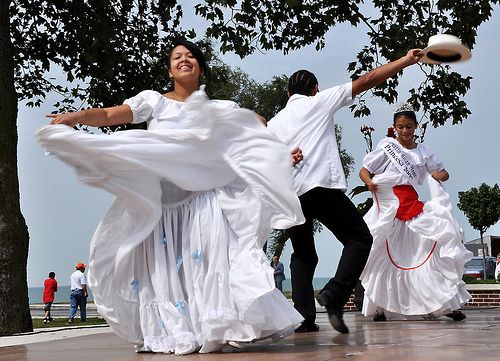
6. Measures to protect information about Users
6.1. The Site Administration takes technical, organizational and legal measures to ensure the protection of the User's personal data from unauthorized or accidental access to them, destruction, modification, blocking, copying, distribution, as well as from other illegal actions.
7. Limitation of the Rules
These Rules do not apply to the actions and Internet resources of third parties.
Salsa is a groovy, passionate and incendiary "sauce" from a variety of Latin American rhythms, to which it is simply impossible to remain indifferent
Salsa dance has no clear definitions, frameworks or concepts - it mixes the most diverse styles and directions of ethnic Latin American and modern dances. It is impossible to list all existing types of salsa, not to mention how to dance. After all, each of them has its own unique features, whether it be drawing, counting or dance rhythm. But no matter how "tangled" salsa is, it will always beckon with its hot rhythm!
But no matter how "tangled" salsa is, it will always beckon with its hot rhythm!
History
Although salsa is a Latin American dance, it was first danced in the USA. In 1960-1970, in the vicinity of New York, Puerto Ricans and Cubans who emigrated to America began to dance salsa. And the dance got its name from the light hand of the "king of mambo" Tito Puente.
Today salsa is one of the most popular club dances in Latin America. It is popular not only in Latin America and among its natives, but has long won the love of almost the whole world. Although classical salsa is still associated with Cuba, which to this day preserves the traditions of this dance, its modern variations around the world include not only Puerto Rican, Colombian and other Latin American rhythms, but even elements of such dance styles as pop, jazz, rock, R'n'B.
Despite the insane popularity around the world, salsa for many years remained a "folk" social dance. And only in December 2005 the World Salsa Championships was held - the first world championship in this direction. And competitions were held, as it is not surprising not in Latin America, but in the same USA. True, no longer in New York, but in Las Vegas.
And competitions were held, as it is not surprising not in Latin America, but in the same USA. True, no longer in New York, but in Las Vegas.
What is salsa
Salsa is an artificially created dance that is a mixture of many Latin American styles and trends. In salsa, there are "features" of such dances as cha-cha-cha, bolero, mambo. However, salsa's closest stylistic brothers are Cuban mambo, son, and Latin American jazz.
At the beginning of its existence, the dance was presented in a rather melodic and calm performance. However, modern variations of salsa have become dynamic and incendiary dances that have a complex rhythmic pattern.
The basic movement of salsa consists of three steps in four counts of the fast-fast-slow type. The fourth count in salsa is usually meant to shift weight, tap (tap), kick (kick), or simply pause. Depending on the direction of salsa chosen, the basic movements and rhythm (shift) may not vary significantly.
Types
It is impossible to enumerate all the styles and types of salsa that exist in the world. Depending on the region, ethnic characteristics, the specifics of the performance of salsa, it acquires more and more new facets, and behind them, directions. But officially there are two main types of salsa:
Depending on the region, ethnic characteristics, the specifics of the performance of salsa, it acquires more and more new facets, and behind them, directions. But officially there are two main types of salsa:
1. Circular salsa
This type is characterized by the fact that the main geometric pattern of the dance is a circle. Circular salsa includes the following subspecies:
- Cuban salsa (casino)
- Venezuelan salsa (Dominican salsa)
- Colombian salsa
2. Linear Salsa (Cross-body style)
This type is characterized by the fact that it is danced "in a line". Linear salsa includes the following subspecies:
- Salsa Los Angeles (LA),
- salsa London,
- salsa New York (NY)
- salsa Palladium
- Salsa Puerto Rico
Despite the clear distribution of subspecies, it can be noted that in some respects they intersect. So, for example, some styles of circular salsa (Cuban salsa, casino) and some styles of linear salsa (LA, London) start on the first count.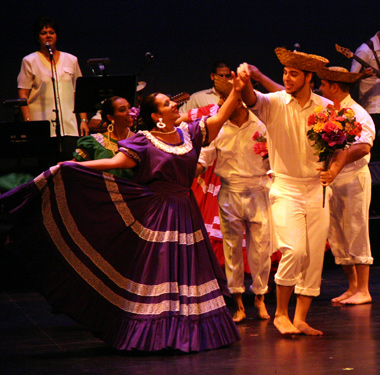 In turn, NY, Puerto Rico, Palladium start on the second count. And Colombian and Venezuelan salsa begin only on the third count, but at the same time, during the dance, a shift in the count can occur. It is also interesting that Cuban salsa can start on any count. And its complexity lies in the fact that the pattern of the dance sometimes changes in the process.
In turn, NY, Puerto Rico, Palladium start on the second count. And Colombian and Venezuelan salsa begin only on the third count, but at the same time, during the dance, a shift in the count can occur. It is also interesting that Cuban salsa can start on any count. And its complexity lies in the fact that the pattern of the dance sometimes changes in the process.
Special features of salsa
Time signature - 4/4
Temp - fast
Music is a mixture of various Latin American rhythms.
Choreography - depends on the species. It can be performed in pairs or in a group (like a round dance).
Dance with pleasure!
If you conduct a survey and ask people to name the most passionate dance, then many will remember salsa, which involves liberated movements and close contact with a partner. Salsa dancing looks like the partners are flirting with each other, having the opportunity to improvise.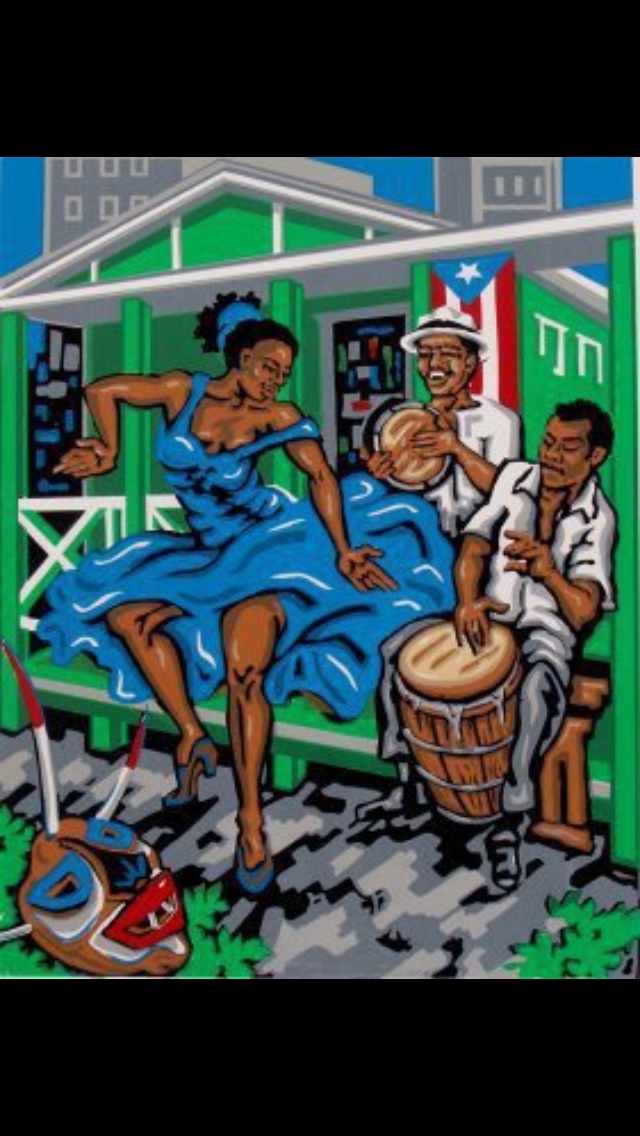
Salsa - history of dance
The historical birthplace of this Latin American dance is the island of Cuba, where it is considered national. It has long since spread to other continents and has become popular. The history of the emergence of salsa dance indicates that the ancestor is the Cuban dream - a rhythm that appeared at the end of the 19th century. There are no strict rules and age restrictions in salsa, the main thing is. There are a number of features that perfectly characterize the salsa dance:
- You can dance salsa even with strangers, but the main thing is to feel some attraction and interest. It is important that there is full interaction.
- The main role in a pair of men, who must lead a partner, who is more of an ornament to the composition, adding sexuality and passion to it.
- During the dance, a person must get rid of all his complexes and be able to interact with different people.
Types of salsa dance
There are two main types of salsa: circular and linear. From the name it is clear that they indicate how people move while dancing. There are different elements of salsa dance that are typical for some countries, so there are several more subspecies. Circular salsa is divided into Cuban, Venezuelan and Colombian. As for the linear group, five subspecies are distinguished here, depending on the place of distribution: Los Angeles, New York, Palladium, Puerto Rico and London.
From the name it is clear that they indicate how people move while dancing. There are different elements of salsa dance that are typical for some countries, so there are several more subspecies. Circular salsa is divided into Cuban, Venezuelan and Colombian. As for the linear group, five subspecies are distinguished here, depending on the place of distribution: Los Angeles, New York, Palladium, Puerto Rico and London.
Salsa solo dance
Many people think that salsa is only a pair dance, but it is not. There are women who prefer to dance solo, showing themselves in full glory. Salsa solo dances require strength and energy, since in most cases the movements and elements change quickly and they need to be done clearly and “tastefully”. Girls can improvise and perform the female party from pair dances. Dance shows help women to reveal their sexuality, sensuality and artistry.
Street dancing salsa
It has already been mentioned that there are different types of salsa, and for street performance, the colombia style was invented, which is performed in a circle.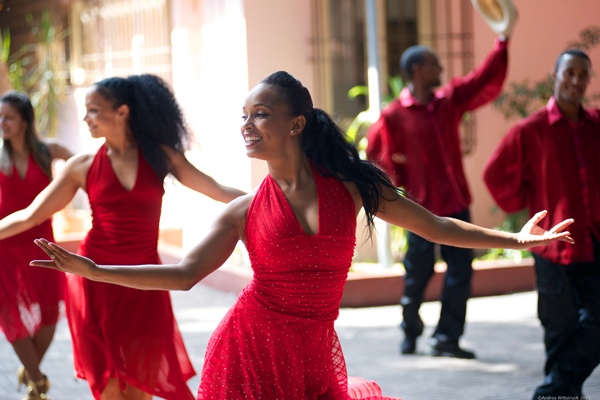 The beautiful salsa dance is filled with numerous turns and small movements. During its execution, partners often change places relative to each other. The characteristic features of street style include the presence of footwork, a fast pace, the performance of acrobatic elements and the partner's performance of numerous pelvic movements.
The beautiful salsa dance is filled with numerous turns and small movements. During its execution, partners often change places relative to each other. The characteristic features of street style include the presence of footwork, a fast pace, the performance of acrobatic elements and the partner's performance of numerous pelvic movements.
Salsa wedding dance
It is traditional to perform a waltz at weddings, but there are couples who want something more energetic and passionate. These criteria are met by the most beautiful salsa dance, which can emphasize individuality and allow you to show feelings. It is believed that the casino style, which is characterized by the execution of movements in a circle, is best suited for a wedding celebration. If you want more romance, then it is better to stay in the New York style, in which the emphasis is on smoothness and ease of movement.
Salsa dance - training
There are several ways to learn energetic and passionate dance.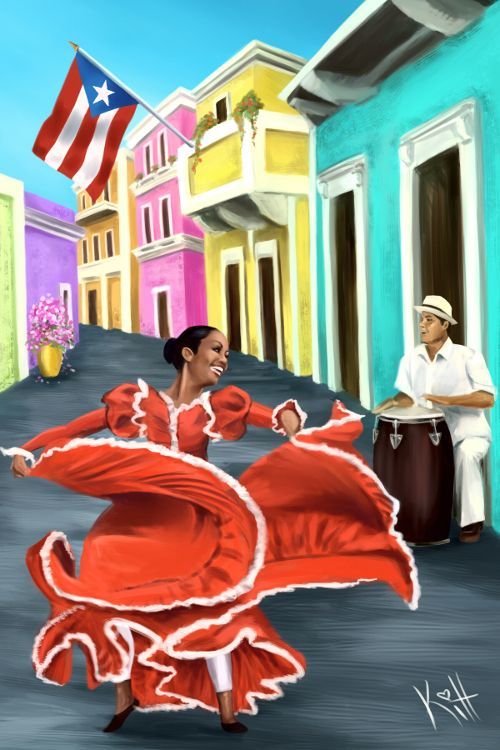
- Salsa dance school or studio is considered to be the most accessible training option, where you can gradually master the movements, steps and other features and rules of this dance direction. In addition, here you can find many like-minded people, dance with different partners, take master classes and so on.
- You can understand how to dance salsa dance in individual lessons, where the result will be achieved much faster and more efficiently. An individual approach will help the coach to identify mistakes in time and correct the student.
- You can study and develop yourself by studying useful information and watching video tutorials. It is difficult to achieve an ideal result in this way and it is better to use it as an additional technique.
- It is recommended to attend various workshops and parties where like-minded people gather and just dance.
It is difficult for beginners to master a new dance, but you need to move step by step and the result will be achieved. There are certain tips that will help in this matter:
There are certain tips that will help in this matter:
- Salsa dance lessons must be regular, otherwise there will be no progress. Experts recommend dancing whenever possible. For self-improvement, it is recommended to attend master classes, watch videos, and the like.
- Choose different partners for the dance, and the more experienced they are, the better the result will be. Experience can be gained from dancers who have their own style.
- Salsa dancing can be improved if you practice movements in front of a mirror, so you can notice mistakes and work out the movements correctly.
- First, it is recommended to learn a few basic steps and learn to improvise based on them.
- Memorize the names of the figures so that you can use them during the dance, swapping places and adding variety.
- It is recommended to train to different music, thereby developing not only the body, but also the ear.
- The main emphasis in salsa falls on every fourth step, and first you need to put your foot on the toe, and then lower it to the ball and only then to the whole foot.
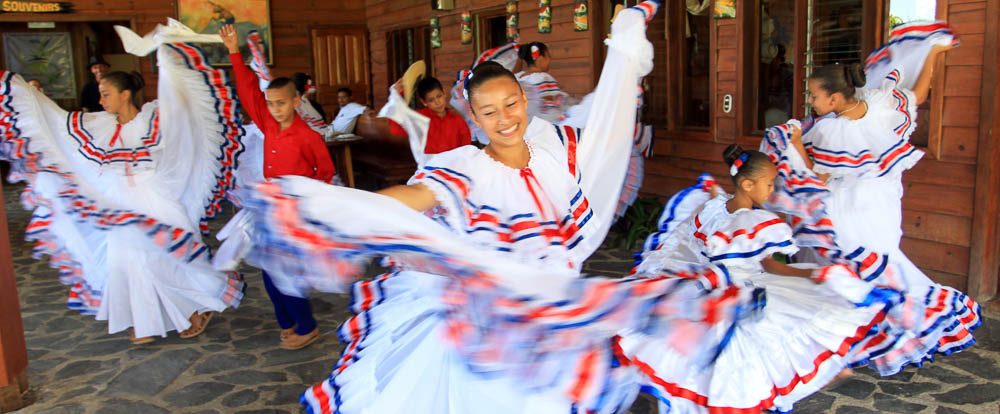 On the fourth count, the emphasis is on the heel. It is important to consider that the foot should be placed with the toe out, and not in.
On the fourth count, the emphasis is on the heel. It is important to consider that the foot should be placed with the toe out, and not in. - Only the man leads the salsa dance, but the partner obeys. It is passion, feelings and communication with bodies.
- The main movement is carried out by the hips, but it should not look vulgar. During the dance, all parts of the body must move at the same pace.
- Absolute interaction is of great importance for pair dance, which should be manifested in movements and gaze. It is important to feel each other so that the couple looks like one.
- You need to search for your own image in dance, developing a unique one with your own features.
Salsa dancewear
You should choose clothes for classes based on your own comfort. It should be made of synthetic breathable material that will allow air to pass through and absorb moisture well. Men in most cases choose trousers and a T-shirt / shirt, but women have much more options. It is convenient to practice in leggings and a top or a T-shirt, but you can choose something more beautiful.
It is convenient to practice in leggings and a top or a T-shirt, but you can choose something more beautiful.
Dress for salsa dance should not be long, so as not to interfere with movement, but short models will be uncomfortable. The best option is a tight dress of medium length. Before buying, be sure to try on the chosen clothing so that it is comfortable and does not interfere with movement. Check the quality of the seams so that they do not rub and do not cause damage to the outfit.
Salsa shoes
To practice dancing, it is recommended to get special shoes. For men, classic shoes with a small heel and leather soles are suitable so that you can better feel the parquet. Salsa dance movements require a stable sole, so classic sandals or shoes with a comfortable deck and mandatory foot fixation are better for girls. In no case should the pair rub and cause any discomfort. The sole should be light and thin.
Salsa - dance music
To learn to dance, you need to understand the rhythm and hear.